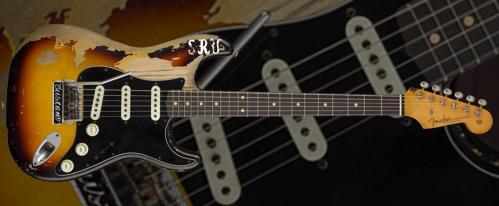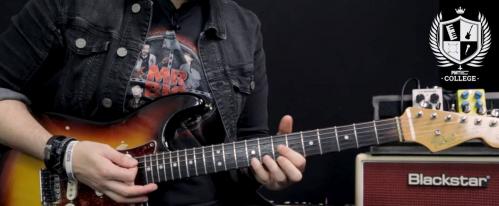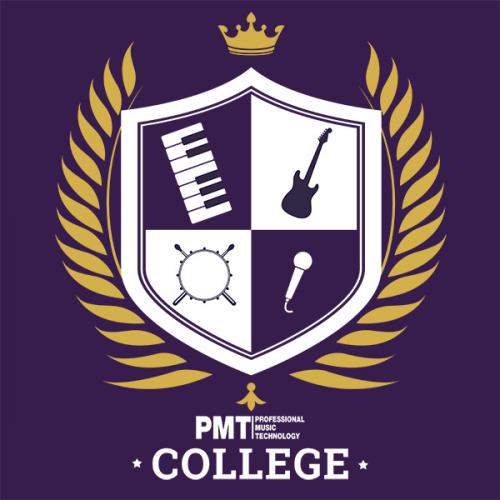We've teamed up with Leigh Fuge to show you how to create chord progressions on guitar that fit together, so you can create a full song in minutes!
When you want to write songs on guitar, you need to know how to create chord progressions that fit together and sound in key. So we've teamed up with Leigh Fuge at MGRMusic.com to show you how you can create chord progressions that actually work in a song, allowing you to take your songwriting to the next level.
You can watch the video below, and read on for more information on songwriting, chord stricture and correct chord progression techniques that are super-easy to learn.
At some point, most guitar players start to toy with the idea of writing their own songs, but this can sometimes be quite a strange thing to get into. The main question that crops up time and time again “If I want to write songs, where do I start?”, or "how do i create chord progressions on guitar that fit together?".
Songwriting can be totally random. You could grab your guitar, hammer away at some chords and keep changing things until something sticks, or, you could learn a few basic principles that will speed up how you view songwriting.
You may not have considered scales to be much of a tool for songwriting, but they can be very effective in speeding up the process. The major scale is a great place to start. Broadly, scales will give us all the information we need about what works in that specific key.
If we look at this in A Major, the major scale looks like this:

We can apply a number to each of those notes, known as intervals:

These 7 notes are the 7 notes that fit into the key of A Major.
When using the major scale as a tool for writing songs, you also need to know which chords fit into this key. There is a formula that you can learn to assist with this principle. Once you know this in A Major, you can transpose it to any key you want.
Each note of the scale has a specific chord type associated with it.

Here's how to play those chords in tablature form:

Once you know these chords you can start forming progressions. The chords are displayed as barre chords, but any version of these chords will work. Some can be played in their usual open positions too.
A great way to start putting together progressions is to just take a straight 8th note rhythm and apply three of those chords to a four bar loop like this:

If you want to dig a little deeper, you can add a fourth chord:

If you come up with a progression you like the sound of, but you want to take it into a more rock based sound, then use the notes of the Major scale but apply a power chord to each one. Power chords do not contain a major or minor third so can be used in place of a major or minor chord at any point:

Then, use these power chords to play your progression instead of using major and minor chords.

You can dive deeper into riff writing by adding some single notes to your chord progression. This is a great way to add melody to a progression of chords or add some technical flair:

Don’t feel limited by the idea of keeping one chord in place for a whole bar. This is a great way to start writing progressions, but once you have the outline for your progression, you can split some bars into smaller groupings of chords that last for fewer number of beats.

Once you start getting comfortable with adding single notes into your progression, you could even use it as a tool to walk between other chords that you are using:

The principles in this lesson and video will help you start to form your own progression. The rules are exactly the same for every major key that you choose to write in. All you have to do is move the major scale to the root note of the key you want to use.
For example, C Major:

By doing this, you then get the same 7 notes and chord types, but with a different note associated with each interval:

It’s time to start writing some songs and embracing your creativity! Have fun and go and write some great songs!
About the Author
Leigh Fuge is a professional guitar player and tutor from Swansea in South Wales and a guitar writer having written and produced content for Guitar Magazine and many other high profile guitar publications and websites.
If you enjoyed this article and video, don’t forever to check out PMTVUK on Youtube for more guitar lesson videos as part of PMT College.
Professional guidance can make all the difference to your development. Head over to mgrmusic.com and find a great teacher in your local area today. We have a great network of teachers around your local PMT stores including the ones in Birmingham, Cardiff and Newcastle.
About The Author:
This lesson was brought to you by MusicTeacher.com, written by experienced guitar teacher Leigh Fuge. Leigh works as part of a community of guitar teachers based across the UK. This week sees the launch of the Guitar Lessons Leicester hub, enabling us to offer lessons to students based across the Leicestershire area. To find guitar teachers local to you, as well as online guitar lessons, simply visit the MusicTeacher.com platform.
If you enjoyed this article and video, don’t forget to check out PMTVUK on Youtube for more guitar lesson videos.







